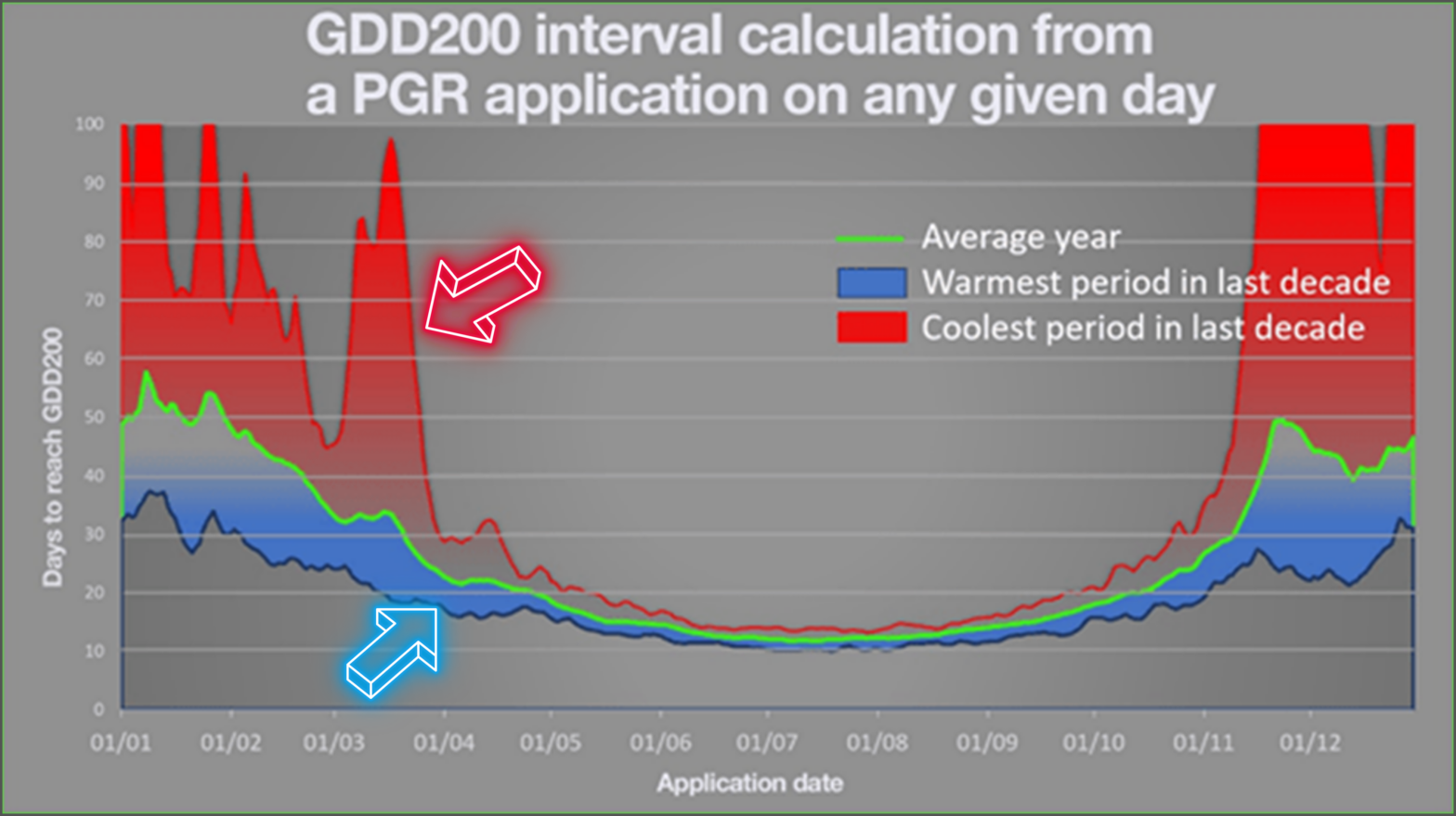With the recent fluctuations in temperature, it’s natural for thoughts to drift towards the optimal timing for initiating a Primo Maxx regimen. The concept of growth degree days has become increasingly popular in the past few years, and it appears this will be a continuing trend.
Primo Maxx is well established and has been for quite some time, and I’ve observed a wide array of application interval timings, rates, and mistakes! Fortunately, I’ve yet to witness any lasting harm, so even if the weather takes an unexpected turn, rest assured there’s minimal risk involved from going early.
Our top recommendation is to commence treatment when plant growth begins, though there’s no apparent harm in starting a bit sooner.

During the cooler early season, Primo Maxx tends to last longer than in the height of summer. An early start won’t harm the turf and will preempt the surge in growth that happens when conditions become ideal, or it can maintain turf quality if unexpected heat or drought stress occurs. In such scenarios, I’d confidently begin with a full dosage, provided you mix in a bit of nitrogen to counter any potential slight yellowing.
Research conducted in the United States has demonstrated the advantages of using a plant growth regulator (PGR) like Primo Maxx to precondition plants before drought and heat stress. The studies indicate that such preconditioning can be crucial for plant survival during prolonged adverse conditions. Although we’re far from dealing with heat stress at the moment, the early spring drying trend suggests it’s wise to be prepared for the worst.
For areas of short cut turf we would suggest making your first Primo application of the season at half rate, tank mixed with a little nitrogen.
Our aim is to leverage the benefits of the growth regulator to enhance sward density, root potential, and growth uniformity.
A question every spring is whether to adhere to the 200 growth degree day (0°C base temperature start) model, if starting early at a reduced rate.
It’s a great question;
The dosage affects the level of growth suppression, not the product’s duration of action.

We’ve got straightforward guide to interpret what 200 growth degree days translate to in actual conditions. This guide averages data over five years: the green line represents the average, the red indicates the coldest periods, and the blue the warmest. According to this, an application on April 1st would yield roughly 23 days of growth suppression in an average year. In colder years, this could extend to 30 days, while in warmer years, it might reduce to 18 days.
The Turf Advisor app has a great modules for managing Primo Maxx applications. My recommendation would be to add the « Growth degree days 0C » to your profile.

Click on the « Growth degree days since » box, a calendar will appear, click the date of your last Primo application then click « Set parameters to confirm.
The GDD since that date will pop up. You can see for this site its 217.4 GDD for the first 27 days this February, highlighting just how warm its been.
So, if you’d applied on the 1st February this year you’d be overdue the next application on the 27th, if following a 200 GDD figure.
Therefore, my advice is to find your start time, trial starting on some areas earlier, see if you like what you get. Speak to others, when do they begin?
If the weather warms up, you’ll find yourself applying the next dose sooner than anticipated. If it remains cool, it will be some time before a second application is necessary—and that’s the advantage of using a growth degree day model.
The benefits that Primo Maxx brings in terms of cost and labor saving when growth is pushing, along with improvements to surface quality are well known to those who have it in the program, its worth testing the waters of an earlier application to see if you can get these benefits to begin earlier.




